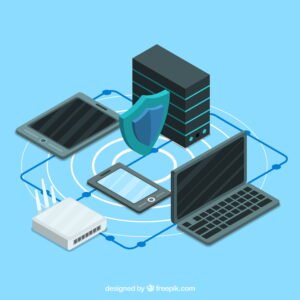In a world that is becoming increasingly interconnected, ensuring the security of Telecom Cybersecurity has emerged as a top priority for global communication providers.
Recent cyber incidents involving Orange and NTT Communications in early 2025 have unveiled significant vulnerabilities within the telecom sector’s digital frameworks.
These breaches not only disrupted services but also triggered serious concerns regarding the readiness of telecom firms to defend against complex, rapid-fire attacks.
Recognizing the Evolution of Cyber Threats
Traditionally, attackers have relied on social engineering tactics to gain access to systems. However, a significant change is taking place.
Nowadays, cybercriminals are increasingly taking advantage of technical weaknesses in software, leading to a 74% increase in direct breaches across telecom networks.
This shift from manipulation to precisely targeted attacks highlights the urgent need for proactive strategies.
A stark illustration of this vulnerability was evident in February 2025, when Orange experienced a severe breach stemming from a flaw in Atlassian’s Jira project management software.
The attackers managed to infiltrate over 600,000 customer records by exploiting outdated system settings and unpatched software.
In a similar vein, NTT Communications faced a breach that affected 18,000 corporate accounts.
These incidents were not a result of obscure or unknown threats but rather stemmed from known vulnerabilities that had not been addressed. stipulated, cybersecurity professionals are urging immediate reforms in the way telecom companies oversee their software environments.

Software Vulnerabilities as a Key Threat Source
Telecommunications networks depend heavily on a variety of interconnected software systems to oversee both mobile and fixed services.
Unfortunately, this complexity often leads to overlooked weaknesses. As malicious actors exploit these vulnerabilities, the risks escalate dramatically.
Julio Melero, an expert in energy and network resilience, states, “Unpatched known vulnerabilities are responsible for more breaches than zero-day exploits.”
This perspective aligns with a broader agreement: telecom firms must focus on thorough patch management, vulnerability evaluations, and proactive system oversight.
Additionally, sophisticated hacker groups linked to state actors, such as Salt Typhoon, are intensifying their activities. This group has been known to target Cisco IOS XE software, which is fundamental for many telecoms’ infrastructure management.
By automating their scanning processes, these actors often outstrip the defensive measures of service providers.
Broadened Attack Surfaces and Hybrid Network Hazards
As telecom infrastructure merges traditional IT with Operational Technology (OT), the attack surface grows significantly. While this hybridization can enhance efficiency, it also introduces more potential failure points.
Once attackers breach IT systems, they can easily transition into OT networks endangering mobile base stations, routers, and physical devices.
Standard IT defenses usually do not perform well in OT settings. Unlike IT systems, which can manage active scanning and interruptions during maintenance, OT systems require uninterrupted operation.
Therefore, telecoms need solutions specifically designed for OT security, such as passive monitoring tools that can identify anomalies without compromising uptime.
Dr. Raymond Chen from the National Cybersecurity Center observes, “The convergence of IT and OT creates an ideal storm of vulnerabilities. Telecom Cybersecurity must advance to safeguard both areas concurrently.”
AI and Governance: Shaping the Future of Cyber Defense
While innovative technologies introduce new defensive capabilities, they need to be woven into a well-structured cybersecurity approach. This is where Governance, Risk, and Compliance (GRC) frameworks become essential.
These frameworks not only assist in risk evaluation but also guarantee that cybersecurity initiatives align with overarching business goals.
Telecommunications providers that adopt GRC models find themselves in a stronger position to prioritize security initiatives, allocate resources effectively, and pursue ongoing enhancements. Concurrently, artificial intelligence (AI) is becoming crucial in strengthening defenses.
AI-powered security solutions can sift through extensive network data, detect threats in real-time, and even execute automated measures to mitigate them.
However, it’s important to note that technology by itself is not a cure-all. The breach at NTT serves as a reminder that even the most reputable service providers can be at risk when fundamental security practices such as timely patching are overlooked.
A comprehensive strategy incorporating employee training, secure remote access guidelines, and regular audits remains fundamental to a robust security framework.
Expert Editorial Comment
The incidents involving Orange and NTT are not isolated events they serve as alerts. As the industry ventures further into the digital landscape, Telecom Cybersecurity must be integral to operational resilience and customer trust.
By effective combining governance, advanced technology, and innovative strategies, telecom providers can shield themselves from current threats as well as those that may arise in the future.

